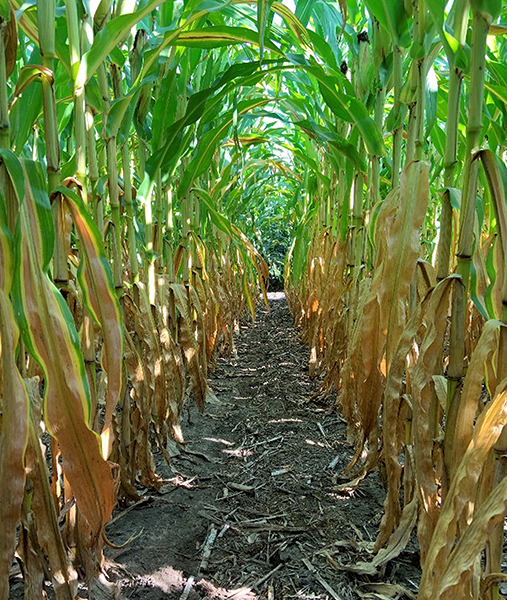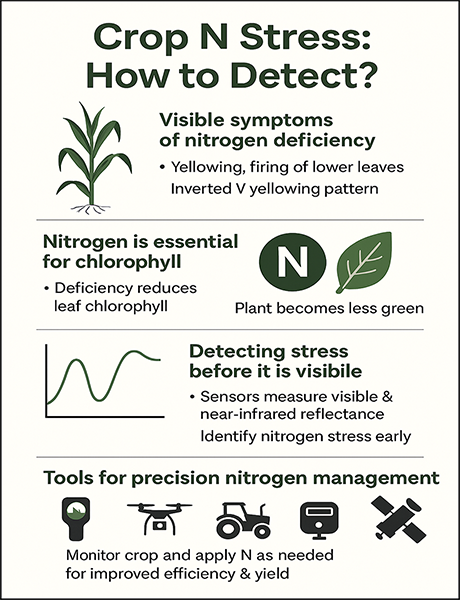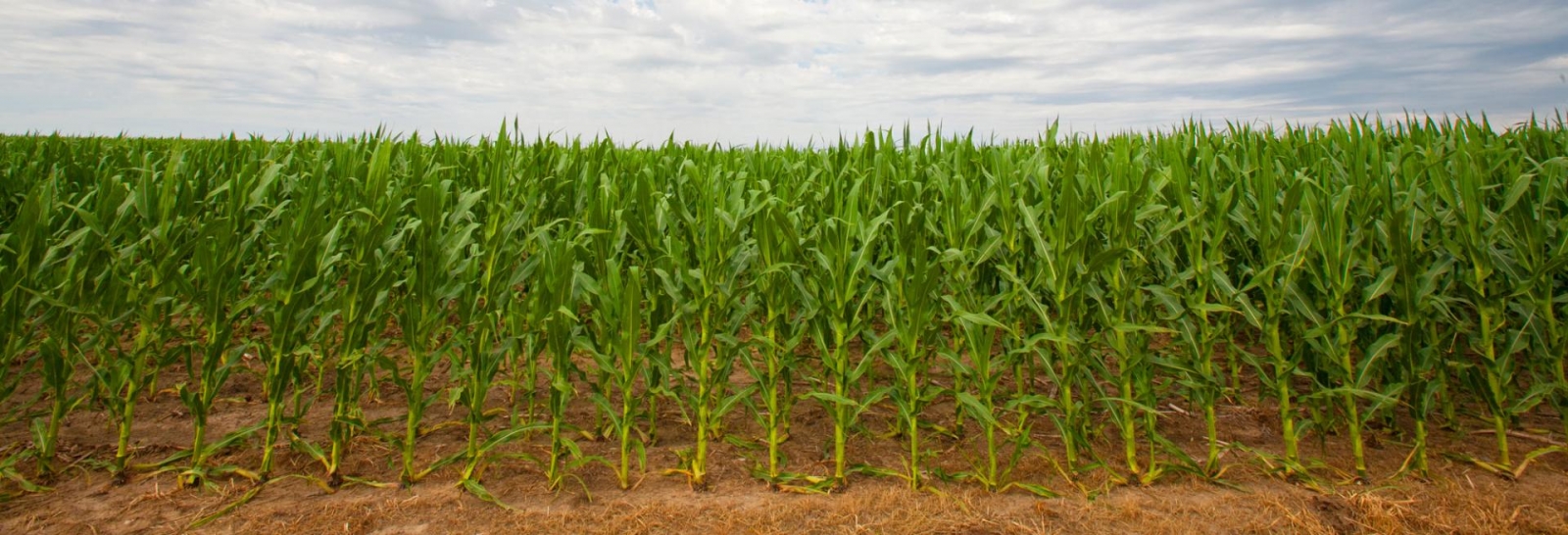This article is the first in a six-part companion series to the Nebraska Extension NebGuide G2365, “In-Season Nitrogen Management for Irrigated Corn.” Each article will explore critical concepts from the guide that growers have expressed a need for greater guidance on, offering additional insights and practical recommendations to help optimize nitrogen use and profitability.
Most corn producers in Nebraska are familiar with the classic symptoms of nitrogen (N) stress in their crop: yellowing or firing of lower leaves, with leaf tips and margins displaying an inverted V yellowing pattern.
The deficiency is observed in lower leaves first since N is a mobile nutrient within the corn plant. When the plant is developing new leaves, it remobilizes N from older leaves into the new tissue. If N is not taken up in sufficient amounts, then the deficiency will appear in old leaves. As N stress increases, these patterns progress higher up the plant stalk.
Depending on when such symptoms appear during the growing season, there has been slight to significant yield reduction once these symptoms are visible. Actually, if slight leaf yellowing occurs very late in the season — just prior to physiological maturity — the impact on yield is negligible, and is an indication the producer is very efficiently managing N inputs. However, farmers generally are not willing to risk the potential for yield reduction and do all they can with N fertilizer management to prevent the appearance of such symptoms.

Research over the past 40 years has illustrated the close relationship in corn between N availability and the chlorophyll level in plant leaves. Nitrogen is a major constituent of the chlorophyll molecule; any deficit in N supply reduces chlorophyll content in plant leaves, allowing other pigments to dominate the color of the leaf, which causes leaves to gradually become less green and more yellow.
We see these changes in visible wavelengths — the portion of the electromagnetic spectrum between 400 and 700 nanometers (nm) in wavelength. However, these changes in pigmentation are also measurable in wavelengths we cannot see — especially in the near-infrared region, between 700 and 1000 nm.
Research has shown that by using sensors that measure light reflectance from leaves in both visible and near-infrared wavelengths, and using two or more of these wavebands in an equation to create a vegetation index (VI), we can detect developing N stress in corn before we can see it with the human eye.
Such sensors can measure reflectance from their own light source (active sensors) or from the sun (passive sensors), and can be handheld, mounted on vehicles, on drones, airplanes or satellites.
Sensor technology has evolved rapidly over the past decade, including satellite sensors. Satellites today have sensors capable of measuring multiple wavelengths, with spatial resolutions of 1-2 m (3.2-6.4 ft) or even less, and as frequently as every day.
With this level of temporal and spatial resolution, satellite sensing is a very useful tool for monitoring crop N status during the growing season, allowing farmers to intervene with N fertilizer application as needed before significant N stress reduces yield potential.

Resources
The Nebraska Extension NebGuide G2365, “In-Season Nitrogen Management for Irrigated Corn” was published in December 2024 as a guide for growers wanting to use sensor technology to improve their efficiency and profitability of corn production.

